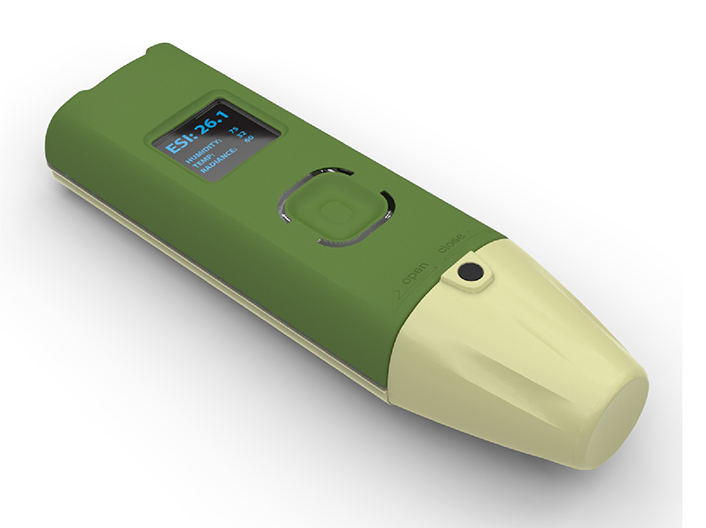|
| *Models may vary from image shown. |
|
|
| |
| |
Know your Environment
An environmental heat hazard can be present in hot humid climates, poorly ventilated buildings, in proximity to plant and machinery or in temperate climates during summer months. WBGT index is the most widely used
method to calculate an environmental stress index. This index is used in
conjunction with charts/tables that have been complied by data gathered
by the U.S. and other armed forces for over 50 years. This large amount of data
gathered is instrumental to form the most comprehensive knowledge for
military heat injury control. |
|
|
|
|
|
| |
Application
Occupational health and safety, and the effect of heat stress on personal health and performance is essential consideration in many industry sectors. Although, ESIM2.0 is specifically designed for Defence applications, the ESIM can be a vital tool in other where Occupational Health and Safety regulations dictate limits on Heat Stress in the workplace. |
|
|
|
|
|
 |
| The ESIM2.0 uses three parameters; solar intensity, air temperature
and relative humidity
to calculate an index equivalent to WBGT. The WBGT is a composite heat index, the ESIM2.0 uses a unique algorithm to calculate the relative weight of each parameter to represent its influence on the human body’s ability to cope with heat. The index is read in conjunction with the tables where the appropriate actions can be taken to implement the correct regime. |
|
 |
|
 |
| *Models may vary from image shown |
|
|
|
Specification
The ESI monitor is a portable heat stress monitoring device which calculates an Environmental Stress index as an equivalent to WBGT. Unlike traditional WBGT measuring devices, it’s portable, rugged and compact design mean that it can be used in the field for the determination of safe work rates.
The ESIM has integrated data logging with time/date stamping allowing for traceability of operational data, eliminating the need for manual recording by an operator. This feature in particular is very important when assessing whether or not operational procedures have been followed when heat stress incidents have occurred.
|
-
Measuring parameters:
Solar intensity / Air temperature / relative humidity
-
Fully functional in environments 0 to 1600W.m-2 / from 10 to 60ºC / 5% to 100% humidity
-
Quick Response time
Environment stress index (ESI), reading displayed within 20 sec. ESI, equivalent to WBGT
-
Long battery life:
Replaceable 2 x 1.5 AA Alkaline batteries provide at least 2500 hours of typical use. Automatically times out after use, shuts down until activated for new reading.
-
Display:
Environmental Stress Index Algorithm
Easy to read LCD with LED backlighting for daylight conditions
|
-
Compact and lightweight
18.6 x 5.2 x 3.8cm (HxWxD) 7.3 x 2.0 x 1.5 inches (HxWxD) 212 gms (0.5 lbs)
-
Rugged construction
IP 674 rating Polycarbonate housings Rubber over-mould top housing
-
Ease of use
Single button function Tethered twist cap Replaceable batteries Integrated USB interface
|
|
|

*Models may vary from image shown |
|
|
|
| *Models may vary from image shown |
| |
OH&S
Military, sporting and indoor/outdoor working conditions, when under elevated temperatures all require strict heat management policies. In order to keep the core temperature within the safe range, parameters such as physical activity, food intake, water intake, salt replacement and type of clothing are varied depending from task to task.
Over the years many human endurance studies have been carried out to form a set of heat injury control tables. These charts outline a set of defined parameters to ensure the body’s core temperature does not exceed 39º C. |
|
|
|
|
|
| |
| |
Heat injury parameters
-
Hazard level – type of activity and nature of clothing
-
For each hazard level there is a Minimum management Regime
-
Continuous Work tables- gives a guidance for maximum duration of
continuous work before the body’s core temp is likely to reach 39ºC
-
Work/rest tables- longer work periods will require a work/rest cycle to
allow the core temperature to recover to 37ºC.
-
Recovery tables – Dependant on WBGT (or equivalent index rating)
and nature of clothing worn during recovery period.
-
Physical Activity levels - moderated to control the risk of heat injury.
-
Water intake – define the requirement/quantity per hour needed for
specific environment.
-
Food intake – amount and type consumed to match energy
requirements
-
Salt replacement – maintain salt levels in blood to help retain water in
the body.
-
Clothing – body loses heat through the skin (convection and
evaporation). Clothing will reduce the body’s ability to lose heat.
|
|
|
|
|
|
| |
About us
Ideation Product Solutions Pty. Ltd.
The company was formed in July 2009 in response to the business opportunity created by the development of the ESI monitor. Ideation Product Solutions was established as a design /development and manufacturing business with the specific aim of manufacturing and marketing the ESI Monitor to defence forces and other applicable industry sectors.
The business principals have been involved with the Australian Defence Science and Technology organisation (DSTO) in bringing the ESIM from its initial prototype phase to its current market ready product. |
|
|
|
|
|
|
| |
| |
Support/ Services
-
Manufacture of the ESIM
-
Supply of auxiliary components to support data logging applications
-
Supply of auxiliary components to improve useability (carry pouches,
-
tripod mount, sensor shroud and attachment clip, etc)
-
Supply of calibration services and/or replace sensor assemblies
-
Supply of PC tools to enhance reporting capabilities of the unit
-
Training services as required.
|
|
|
|
|
|
Contact us
Ideation Product Solutions Pty. Ltd
unit 2 | 107 highbury rd burwood
3125 vic australia
tel +61 3 9808 1399
info@ipsol.com.au
|
asdf |
 |
|